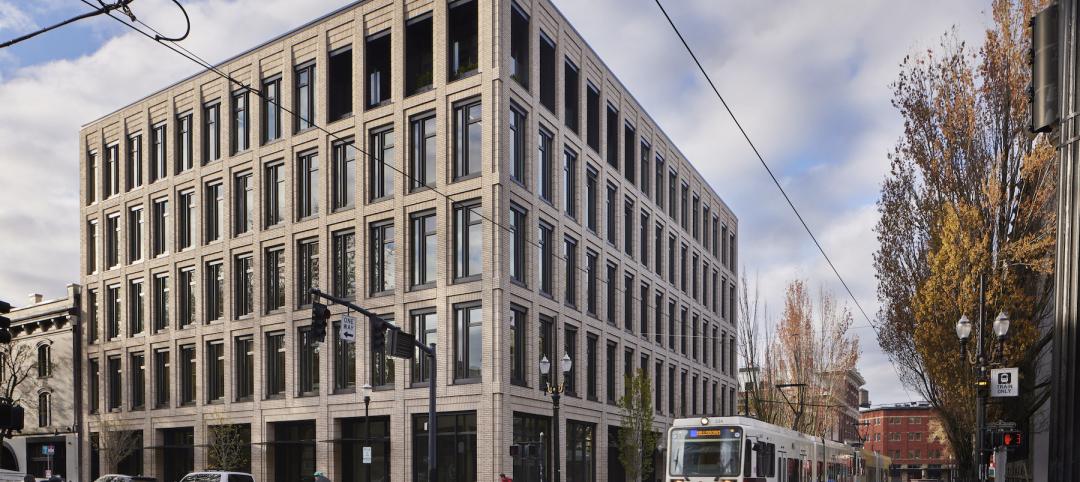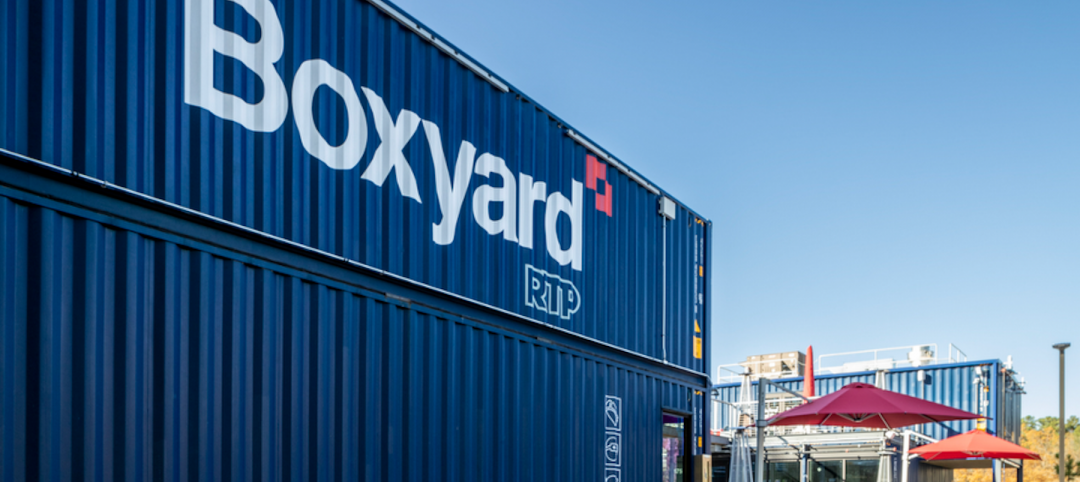The global market for products and services related to achieving net zero energy in residential and commercial construction and renovation is projected to expand at a compound annual growth rate of 44.5% between 2014 and 2035, and exceed $1.4 trillion in that last year, according to the latest estimates in a new 24-page report, titled Net Zero Energy Buildings, published by Navigant Research.
In North America alone, that market is projected to increase annually at a rate of 38.4% during that timeframe, reaching more than $127 billion in 2035.
Once confined mostly to single-family home and one-story office construction, net zero energy (ZNE) is penetrating a nonresidential sector that is placing greater emphasis on efficiency, renewable energy, and consumption. The Navigant report contends that the technology needed to achieve net zero energy is available for almost any building type.
Benjamin Freas, Navigant’s Principal Research Analyst in Washington, D.C., tells BD+C that the regulatory climate, both in North America and worldwide, is leaning in directions that favor ZNE construction practices. He points specifically to California’s Title 24, which went into effect on January 1 and sets minimum energy saving requirements for new buildings and renovations. By 2030, all new commercial construction in California must be ZNE, meaning that those buildings produce at least as much energy onsite as they consume.
Freas concedes that commercial ZNE so far is in the “pilot program phase” and is being being adopted “jurisdiction by jurisdiction, state by state.” But he’s convinced that the actions of “forward-thinking” states such as California, Massachusetts, and New York will ultimately result in regional and national code changes.
Freas also points to the Paris Climate agreement, which takes effect on November 4, 2017, as a possible turning point for ZNE construction. The pact, with 197 signatories, requires governments to present national plans to reduce emissions to limit global temperature rise to well below 3.6 degrees Fahrenheit. (While President-elect Donald Trump has threatened to pull the U.S. out of that accord, there is less certainty about what impact his administration will have on America’s push toward greater energy efficiency and reducing carbon emissions.)
Another factor in Navigant’s projections is the advocacy of groups like U.S. Green Building Council and the New Buildings Institute that are pressing developers and their AEC partners to entertain ZNE as an option in their design and construction plans.
Freas observes that ZNE is starting to seep into AEC continuing education programming. However, he admits that educating the industry about the benefits of ZNE remains “a challenge,” in part because the costs related to making buildings net zero energy are “currently not acceptable to most building owners.”
That being said, Navigant’s research paints a picture of a global market in which ZNE is inevitable and, eventually, ubiquitous.
Glazing, walls and roofs are the biggest potential ZNE areas. Navigant estimates that the value of ZNE products and services for wall and roof construction and renovation will expand to $366.3 billion in 2035, from a mere $134.1 million in 2014. ZNE-related glazing products and services will increase to $369.9 billion from $132.4 million over that same period.
Another big gainer could be ZNE HVAC products and services, which are expected to grow at an annualized rate of 45.8%, to $172.6 billion in 2035.
All told, the global ZNE products and services market is projected to hit $1.436 trillion in 2035, compared to only $629.3 million in 2014.
The North American ZNE market will reach $127.1 billion in 2035, nearly 1,000 times larger than the 137.4 million market at 2014. The walls and roofs sector is expected to increase at an annual rate of 39.6% to $32.3 billion; and ZNE products and services for glazing should increase annually by 39.8% to $32.9 billion.
Related Stories
Energy | Jul 13, 2022
Electrification of buildings, new and old, furthers environmental responsibility and equity
It’s almost a cliché in our industry, but nonetheless: The greenest building is the one that is already built.
Codes and Standards | Jul 12, 2022
USGBC sets out principles for LEED’s future
The U.S. Green Building Council recently published a report containing principles outlining how LEED will evolve.
Building Team | Jul 12, 2022
10 resource reduction measures for more efficient and sustainable biopharma facilities
Resource reduction measures are solutions that can lead to lifecycle energy and cost savings for a favorable return on investment while simultaneously improving resiliency and promoting health and wellness in your facility.
Building Team | Jul 1, 2022
How to apply WELL for better design outcomes
The International WELL Building Institute (IWBI) cites attracting top talent, increasing productivity, and improving environmental, social or governance (ESG) performance as key outcomes of leveraging tools like their WELL Building Standard to develop healthier environments.
Green | Jun 22, 2022
World’s largest commercial Living Building opens in Portland, Ore.
The world’s largest commercial Living Building recently opened in Portland, Ore.
Codes and Standards | Jun 14, 2022
Hospitals’ fossil fuel use trending downward, but electricity use isn’t declining as much
The 2021 Hospital Energy and Water Benchmarking Survey by Grumman|Butkus Associates found that U.S. hospitals’ use of fossil fuels is declining since the inception of the annual survey 25 years ago, but electricity use is dipping more slowly.
Energy-Efficient Design | May 19, 2022
Shipping containers used to build Research Triangle Park’s first community gathering space
Shipping containers were the prominent building material used to construct Boxyard RTP, the first public community and gathering place in North Carolina’s Research Triangle Park (RTP).
Codes and Standards | May 19, 2022
JLL launches non-profit aiming to mitigate climate change
Real estate and investment management firm JLL recently launched JLL Foundation, a non-profit dedicated to making a long-term impact on environmental sustainability.
Headquarters | May 10, 2022
JPMorgan Chase’s new all-electric headquarters to have net-zero operational emissions
JPMorgan Chase’s recently unveiled plans for its new global headquarters building in New York City that is rife with impressive sustainability credentials.
Sponsored | BD+C University Course | May 5, 2022
Designing with architectural insulated metal wall panels
Insulated metal wall panels (IMPs) offer a sleek, modern, and lightweight envelope system that is highly customizable. This continuing education course explores the characteristics of insulated metal wall panels, including how they can offer a six-in-one design solution. Discussions also include design options, installation processes, code compliance, sustainability, and available warranties.

















